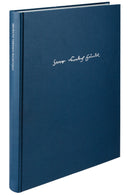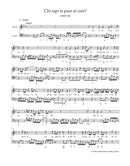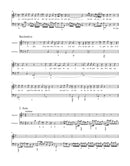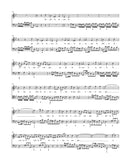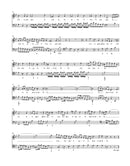| 作曲者 | George Frideric Handel (1685-1759)・ジョージ・フリデリック・ヘンデル |
| タイトル | Kantaten für Solostimme und Basso continuo = Cantatas for solo voice and basso continuo |
| 出版社 | Bärenreiter・ベーレンライター |
| シリーズ名 | Hallische Händel-Ausgabe; Halle Handel Edition (HHA) Ser. 5. Vol. 1.1 |
| 楽器編成 | Vocal, Basso continuo |
| 楽器編成(詳細) | Soprano solo, Alto solo, Bass solo, Basso continuo |
| 品番 | KGA9790006578580 |
| 校訂者 | Andrew V. Jones |
| 言語 | イタリア語 |
| 形状 | LXIV, 165 ページ・1322 g・布装丁 |
| 出版年 | 2024年第1刷 |
| 出版番号 | BA 10729-01 |
| ISMN | 979-0006578580 |
Handel’s cantatas for solo voice and basso continuo are jewels waiting to be discovered. They number over 80, and are probably the least known body of compositions that Handel wrote; their neglect is astonishing in view of the extraordinary technical skill and imagination that are displayed by a composer who (when he started writing cantatas) was in his early 20s. Not only the musical quality of the cantatas but also their variety are perhaps all the more surprising in view of Handel’s most common starting-point: a poem expressing the love – usually unrequited – between nymphs and shepherds.
Handel’s main place of residence from December 1706 onwards was Rome, and his chief patron was the Marquis Francesco Maria Ruspoli (1672–1731; Prince of Cerveteri from 1709). Ruspoli was a member of the “Accademia degli Arcadi” (or “Accademia dell’Arcadia”), a society that formed an important context for the composition of secular cantatas. Founded in Rome in 1690, it promoted the reform of Italian poetry and drew inspiration from the pastoral romance “Arcadia” by Jacopo Sannazaro and from the Eclogues of Virgil and the Idylls of Theocritus. The members of the Academy adopted pastoral names; Ruspoli’s was Olinto, one of the characters in Handel’s accompanied cantata “Olinto pastore, Tebro fiume, Gloria” (HWV 143), for which Ruspoli might have provided the poetry. In autumn 1705 Ruspoli took up residence in the Palazzo Bonelli. From 1707 onwards Handel’s cantatas were first performed there at Ruspoli’s weekly “conversazioni” on Sunday evenings.
It is clear from the huge number of manuscript transcriptions of Handel’s cantatas that they were extremely popular in the eighteenth century, and their number was increased by the practice of transposition: a singer who found that the tessitura of a cantata lay outside her or his range might have asked the composer or (more often) a copyist to produce a version with a more convenient tessitura. If the composer himself were responsible for such a transposition, he produced a version that demonstrated creative re-thinking; if a copyist were responsible, the transposition was usually literal, and divergences from the original were likely to be careless errors. Most of Handel’s cantatas contain two arias, each preceded by a recitative, producing an overall structure of recitative – aria – recitative – aria. In a few cantatas (e.g. HWV 104) the number of arias is extended to three. The voice for which Handel composed most of his cantatas was soprano; in addition, there are about sixteen for alto and two for bass.







